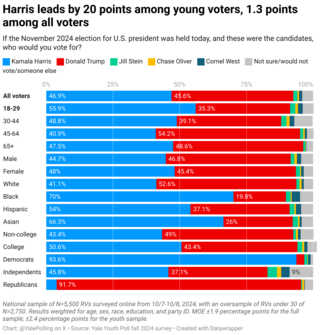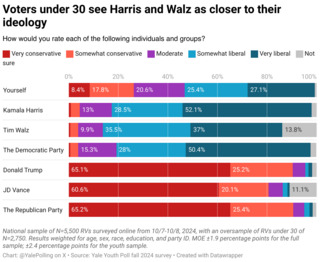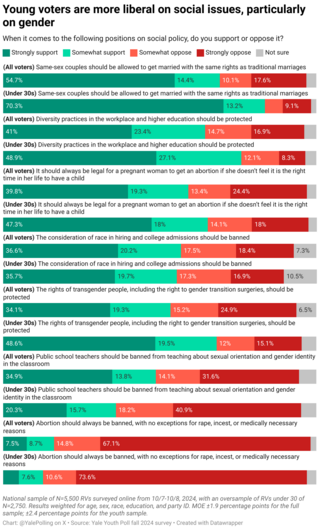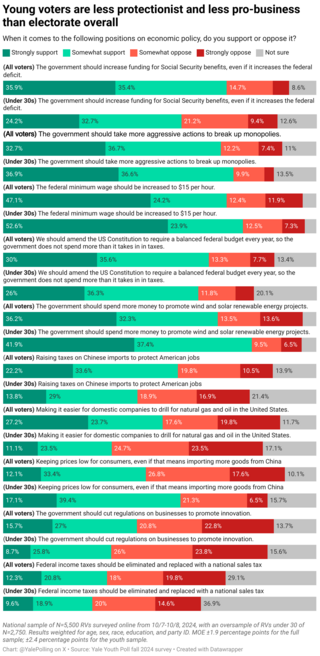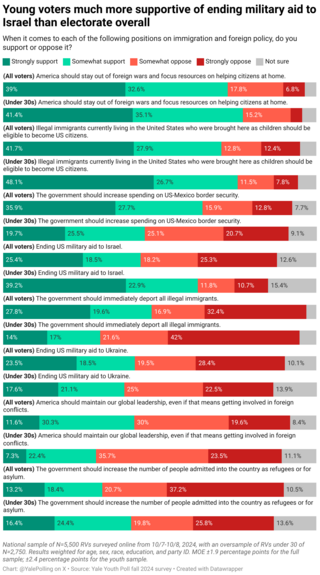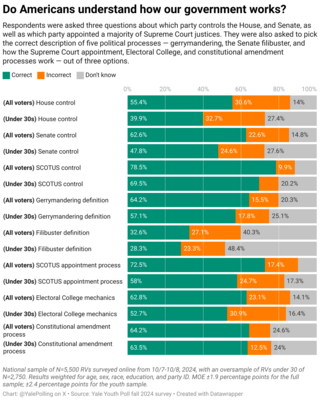About The Poll
The Yale Youth Poll, an undergraduate-led research project, released a new poll of young voters (aged 18-29). It surveys young people’s preferences for the 2024 presidential election, their preferred policy positions, their perceived top threats to democracy, and their preferences amongst potential democratic reforms. Simultaneously, it measured each respondent’s civics knowledge. The poll sampled 5,500 registered voters, including an oversample of 2,750 voters aged 18-29, enabling a comparison of young voters to the broader electorate.
While Vice President Kamala Harris has a narrow 47-46 lead over former President Donald Trump among all voters, Harris leads 56-35 with young voters. On specific policy positions, young voters are generally more liberal than the electorate overall. Voters overall were tied on whether to end military aid to Israel, but young voters supported ending aid by a 39.6-point margin. While voters overall opposed increasing the number of asylum seekers and refugees admitted to the United States by a margin of 26.3 points, young voters opposed it by a 4.8-point margin.
On economic issues, young voters were more likely to support increased government funding for renewable energy, raising the minimum wage to $15 per hour, and increased antitrust enforcement.
With voters overall, a pro-choice policy message scored at +21.3 net support while a pro-life message scored at -65.7. Young voters opposed a policy message modeled after the Florida “Don’t Say Gay” law by a margin of 23.1 points, while voters overall narrowly supported the measure by a 2.9-point margin.
Compared to the electorate overall, young voters have generally lower civic knowledge — a smaller share can correctly identify which party controls each branch of Congress, or accurately describe how the Electoral College works.
Young voters identified gerrymandering as the biggest threat to democracy, while voters overall picked extremism from both sides equally as the top threat. The best-testing democracy reform proposal among young people was 18-year term limits for Supreme Court justices; among voters overall it was 12-year term limits for members of Congress.

